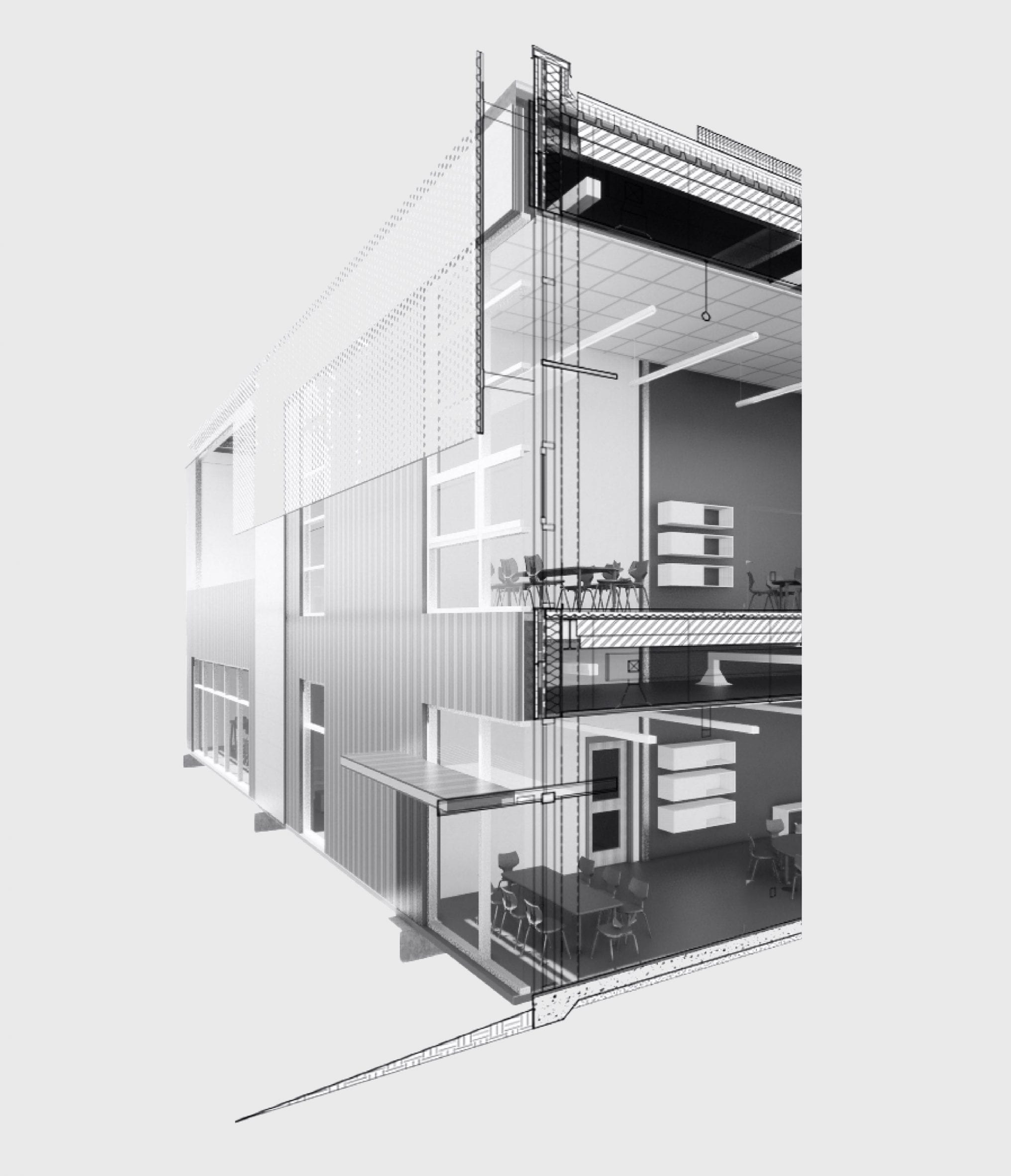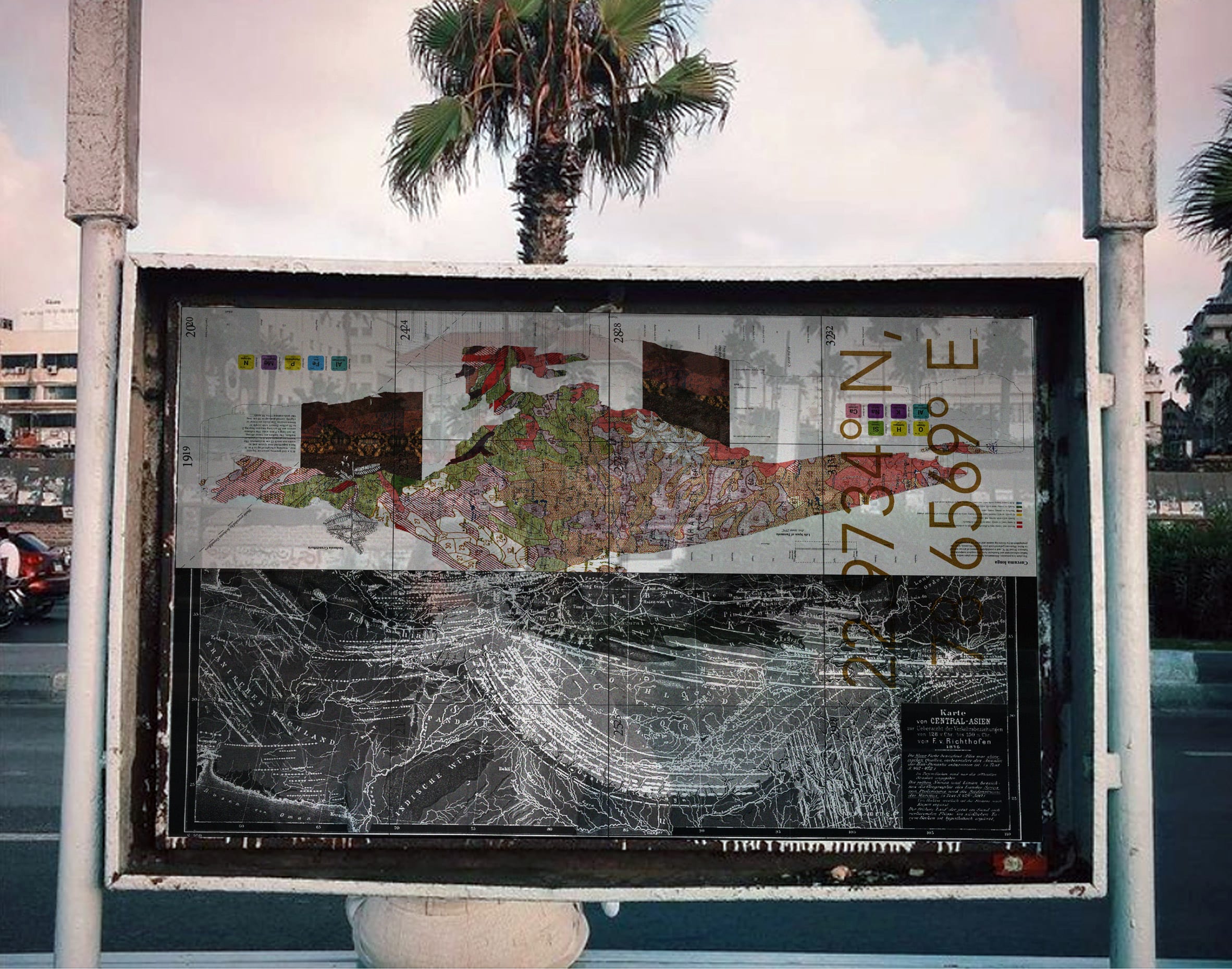A museum dedicated to poetry, an airport with a courtyard and an urban agriculture development are included in Dezeen's latest school show by architecture students at the California Baptist University.
Also featured is an analysis of how daylight transcends through space and a women's healthcare clinic in rural Rwanda.
California Baptist University
School: California Baptist University (CBU), College of Architecture, Visual Art and Design
Courses: Architecture programme
Tutors: Krysten Burton, Susan Duemer, Aaron Greene, Keelan Kaiser, Matthew Niermann, David Ogoli, Mark Roberson and Caleb Walder
School statement:
"California Baptist University (CBU) architecture students design for the public good. The architecture programme at CBU prepares students to serve as design professionals rooted in the Christian faith tradition. This unique approach to architectural education encourages students to be inspired and guided by faith as they endeavour to serve the public good.
"The CBU architecture programme offers an accelerated five-year accredited Master of Architecture degree in the Inland Empire of Southern California, which features a variety of opportunities for interdisciplinary inquiry, professional development and global study and engagement.
"The design curriculum within the CBU architecture programme emphasises an analytical and data-driven approach to understanding the impact of architecture on human experience and the natural environment across a range of project types. The work in this VDF school show represents the imagination of a plurality of questions and courses by students who, as a whole, participate in critical investigations of design, material and the ephemeral."

Terminal by Allison Bighouse
"For this spatial concept for a hypothetical airport terminal, I was inspired by courtyard buildings. I wanted to incorporate this into my airport to challenge the assumption that you have to be 'inside a building' when you're in an airport. My design includes a large courtyard area in the centre with outdoor seating. Natural plant elements are visible from all sides of the indoor area through glass walls.
"By including a courtyard was integral to the design concept, a linear terminal building wouldn't work. Instead, I created a closed structure. I tried many different shapes and incorporated convex curves and obtuse angles to maximise surface area for plane gates.
"I decided on a distorted hexagon shape because it naturally worked with my origami-inspired roof plan. The building shape also provided clear areas for the main entrance and security area, plane gates and courtyard."
Student: Allison Bighouse
Tutor: Keelan Kaiser
Course: SP21 ARC122

Context by Alyssa Lee and Christopher Diaz
"The work of second-year students Alyssa Lee and Christopher Diaz typifies the foundation experiences of CBU students, creating imagined space and objects. The pair of strategies, collage from within, and generating shape, employ primary design principles that are strong in themselves while also serve as formative works.
"Considering imagined space as a place one is drawn into, collages serve to knit together a plurality of materials, volumes, and programmes. Each fragment embodies abstract and intricate messages and meanings, and these are used to explore the quality and nuances of placemaking.
"Shape generation, subsequent duplication and positioning is also a key part of the foundation years. Imaginary and fantastical sites bring these studies to life and stimulate consideration of their possible pragmatic ends."
Student: Alyssa Lee and Christopher Diaz
Tutor: Caleb Walder
Course: SP21 ARC212

A Poetry Museum by Thamali Natasha Sri Kantha
"I combined methods, information and products from the previous studio projects through a series of design workflows. The starting point for this particular workflow was the earth and sky collage I did previously during the semester. This design includes public areas; on the first floor, there is the gallery, performance space and service areas; the second floor includes a public collection; while a cafe, roof terrace and research collection are on the third floor.
"This design has a linear perspective that opens up the entire floors from the south to the north of the site. The use of grid lines to determine each space and programme also allowed me to place an atrium and a huge skylight in the middle of the building.
"In addition, the overlapping shapes created unique spaces in both interior and exterior of the building that will shape the experience. In order to determine the placement of the building on the site, I referred to the site analysis done in a previous project. I examined the circulation diagrams and decided to place the building close to Orange and 6th Streets since there is more pedestrian circulation around those streets."
Student: Thamali Natasha Sri Kantha
Tutor: Caleb Walder
Course: SP21 ARC212

Lighting Analysis by Mark Denison
"Light is an elusive yet critical aspect of designing transcendent spaces. Any impactful incorporation of natural light requires a technical understanding alongside an artful vision. This requires intentional experimentation. The student developed light studies aiming to exemplify one specific characteristic effect of natural light through apertures of various types, sizes, and materials.
"The student combined techniques creating taxonomies of evidence, documenting the design with sequential photography for analysis and adaptation. Direction, intensity, colour and quality were examined over the course of a day. The resulting choreography of light uncovered possibilities for framing architecture as an experience of the transcendent."
Student: Mark Denison
Tutor: Matthew Niermann
Course: SP21 ARC212

School of Ecology by Gerald Portea
"The envelop system complements the structural and environmental systems to enhance both the occupant experience and aesthetic design through sustainable strategies.
"It is designed as a composite of cladding and sun-shading devices: a layered network that contributes to the resilience of the building. The machined aesthetic of the envelope is meant to inspire and stimulate the learning, craft and collaboration that occurs inside.
"Using a highly refined sleek material and incorporating the natural landscape of the park around it, the architectural expression becomes that of a connection and dynamic of technology and nature, understood and enjoyed by the students who attend the school.
"The school then becomes a statement for the city of Riverside, a city of art and innovation. Overall, the aesthetic of the exterior envelope aims to become a part of the building networks and begin to express their level of integration."
Student: Gerald Portea
Tutor: Caleb Walder
Course: FA20 ARC410

Christian Study Centre by Andriani Sugianto
"The Christian Study Centre moves the passerby with its glowing presence, prompting longing into the viewer beckoning them to venture towards an enchanting world. The Christian Study Centre's intricate, natural form hints at something captivating – something beyond the physical world.
"The centre questions the ordinary and leads its viewers to transcendent thought. The experience parallels our pursuit to satisfy this constant longing with a physical experience from a garden space to the prayer chapels and reading room to finally reach the central chapel.
"This image highlights the reading room, which offers other moments to dwell in contemplation both in community and individually, and extends the representation of the intermediate space between humanity and God.
"The reading room is met with diaphanous lighting from the chapel and lighting communicating absolute time from the East façade. The reading room tenders an ethereal vantage of the chapel that beckons longing to reach that central space."
Student: Andriani Sugianto
Tutor: Matthew Niermann
Course: SP21 ARC412

Urban Oasis by Ulysses Hermosillo and Enzo Vliches
"Urban Oasis is an affordable housing and sustainable hybrid housing and urban agriculture development. It is based on a Biblical passage where God instructs the Israelites through the prophet Jeremiah saying, 'build houses and live in them; and plant gardens and eat their produce'. Residents of Lake Elsinore are provided with a pleasant and dignified space to live and prosper regardless of their financial situation.
"Neighbours and visitors can share and enjoy communal spaces with exceptional views of the lake and mountains where they can mingle together and tend their gardens. Urban Oasis provides opportunities for life skills around healthy food consumption by integrating community farm management and harvesting with the facility as a significant part of the architectural and operational program.
"Through the art and craft of growing their food, taking care of vegetation, and motivating people to work together, Urban Oasis aims to make a dwelling and farming a synthetic experience in an increasingly urban future."
Student: Ulysses Hermosillo and Enzo Vliches
Tutor: Caleb Walder
Course: SP21 ARC514

Health Services in Rural Rwanda by Courtney Mitchell
"Exploring the contextual application of evidence-based healthcare design, this thesis project aimed to synthesise the best practices of disease-focused healthcare with established methods of patient-focused healthcare into a proposal for a women's health care clinic in rural Rwanda.
"This hybrid healthcare approach was augmented by intentional program development and spatial delineation that empathetically supported rural women's needs and patient family needs during extended maternity stays."
Student: Courtney Mitchell
Tutor: Matthew Niermann
Course: SP21 ARC511

Media lab by Jacob Arellano
"Culture, community, materiality and technology permeate nearly every facet of our lives and are both the catalysts for and generating proponents of the physical manifestations and boundaries of space we call architecture.
"These four aspects contribute in varying degrees to the success and/or failure of works of the built environment. Collectively these variables simultaneously span from intangible to tangible-between art and science-and determine aesthetics and functionality.
"The relationship of their interconnectivity are tethered to reconciliation and empathy – two additional factors of architecture that designers increasingly find themselves grappling with.
"The instructive Media Lab at Leimert Park in Lake Elsinor provided an opportunity for students to explore design through focusing on these four architectural variables with reconciliation and empathy requiring students to consider the culture and communities served and sustained."
Student: Jacob Arellano
Tutor: Aaron Greene
Course: FA20 ARC510

Chapel by Samuel Soine
"The chapel space is the culmination of a broader architectural gradient, experienced through space and time, contrasting the orthogonal and the organic. This highlights the juxtaposition between the human-made and the God-made.
"Through organic form and the implementation of natural materials and space echoes the grandeur of God's design and his interpersonal relationship with humankind. As daylight floods the space below, users are encouraged to pause, to look up and reflect God's character.
"The chapel consists of a central multi-usable space on the ground floor, with stepped balconies forming the outer edge. These balconies offer users intimate spaces to pray, worship and gather. The singular skylight further encourages a vertical view as opposed to horizontal, as all otherworldly distractions fade away in the presence of God."
Student: Samuel Soine
Tutor: Matthew Niermann
Course: SP21 ARC412
Partnership content
This school show is a partnership between Dezeen and the California Baptist University. Find out more about Dezeen partnership content here.
The post California Baptist University spotlights ten student architecture projects appeared first on Dezeen.
from Dezeen https://ift.tt/3wbbCTN




























